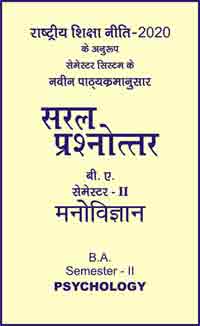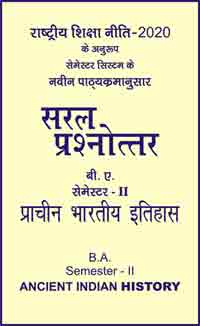|
बी काम - एम काम >> बीकाम सेमेस्टर-2 फण्डामेन्टल्स आफ ई-कामर्स बीकाम सेमेस्टर-2 फण्डामेन्टल्स आफ ई-कामर्ससरल प्रश्नोत्तर समूह
|
5 पाठक हैं |
||||||
बीकाम सेमेस्टर-2 फण्डामेन्टल्स आफ ई-कामर्स - सरल प्रश्नोत्तर
Question- Discuss Operations of E-Commerce.
Ans.
Operations of E-Commerce
1. Electronic Payment Systems (EPS) : Electronic payment systems are proliferating in air ticketing, insurance, banking, retail, health care, on-line markets, and even government-in fact, anywhere money needs to change hands.
In the e-commerce consumers buy products from a business on the Internet. Getting the money from consumers before shipping the product is important.
Any e-commerce environment with a payment system needs a more complex design. A payment system means esnuring payment security, transaction privacy, system integrity, customer authentication, and the purchaser's promise to pay.
EFT is any transfer of funds initiated through an electronic terminal telephonic instrument, or computer or magnetic tape so as to order instruct, or authorize a financial institution to debit or credit an account. It utilizes computer telecommunication components both to supply and to transfer money of financial assets transfer.
Work on EFT can be segmented into as under:
Financial Payments : Large scale or wholesale payments such as bank-to-bank transfer, small scale or retail payments e.g. ATMs.
Retailing Payments : Credit cards for example, VISA or MasterCard, private credit/debit cards for example. J.C. Penney Card, etc.
Electronic commerce payments: Token based payment systems- electronic cash (Digicash), Electronic checks, (Net cheque, smart cards) or debit cards (Monex Electronic).
2. Electronic money or e-money or e-cash : Electronic money or cash is a new concept in on-line payment system because it combines computerized convenience with security and privacy that improves on paper cash. E-money is an electronic medium for making payments.
3. Digital token based electronic payment system : After notational money, the credit system developed is 'electronic' token in the form of electronic cash. Electronic tokens are of three types:
Cash : Transactions are settled with the exchange of electronic currency. An example is electronic cash or e-cash.
Credit or postpaid : The server authenticates the customers and verifies with the bank that funds are adequate before purchase. Examples- postpaid mechanisms are credit/debit cards.
Debit or prepaid : Usere pay in advance for the privilege of getting information. Example smart cards and electronic purses.
4. Automicity, Consistency, Isolation and Durability-Test : This test is also a way of money transfer. In it atomicity test says that a transaction must occur completely or not at all. As per consistency all parties involved in the transaction process must agree to the exchange. For instance, in a customer retailer relationship involving a purchase, the customer must agree to purchase the good for a specific price and the merchant must agree to sell it at that price, other wise, there is no basis for exhanges.
As per isolation: Each transaction must be independent of any other transaction and be treated as a stand-alone episode. Durability indicates that it must always be possible to recover the last consistent state or reverse the facts of the exchange:
5. SET Protocol : It is an emerging standard protocol for handling transactions on the Internet Web. With SET, a user is given an electronic wallet (digital certificate) and a transaction is conducted and verified using a combination of digital certificates and digital signatures among the purchaser, a merchant, and the purchaser's bank in a way that ensures privacy and confidential. SET makes use of Netscape's Secure Sockets Layer. Microsoft's Secure Transaction Technology and Terisa system's Secure hypertext Transfer Protocol. Secure electronic transaction is a system for ensuring the security of financial transactions on the Internet. It was supported initially by Visa, Microsoft, Netscape, Master card etc.
6. Interoperability, Conservation, Economy, Scalability Test : It addresses four important properties of money transfer. Interopretability is an Ability to move back and forth between different systems. Consxervation indicates how well money holds its value over time and how easy money is to store and access. Economy is the prime condition for processing a transaction should be inexpensive and affordable. This property has a direct relationship to the size of the transaction. Sacalability test means to the ability of the system to handle multiple users.
7. Payment Gateways : The payment gateways are financial intermediaries. They take care of settlement of e-commerce transactions. A payment getaway can be set up by a bank but it need not necessary be a bank. It needs software which is linked to customers and suppliers.
8. Debit card based electronic payment system : Debit cards are upgraded ATM cards. They look exactly like credit cards. They are easier, more convenient, less cumbersome, less burdensome, and offer greater access to your money than do checks.
9. E-wallet : E-walllet is an electronic payment system. It operates like a carrier of e-cash and information in the same way a real-world wallet functions such as carriers real cash and various Ids. The aim is to give shoppers a single, simple and secure way of carrying currency electronically.. Trust is the basis of the e-wallet. The procedure for using an e-wallet is as under-
Decide on an online site where you would like to shop.
Download a wallet from the merchant's website you intend to shop.
Fill out personal information.
When you are ready to buy, click on the wallet buttons and presto, now the buying process is fully executed. Billing information is automatically filled out.
10. Smart Cart : It contains a programmable chip, a combination of RAM and ROM storage and an operating system of sorts, all embedded in the plastic. Smart card encrypts digital cash on a chip and can be refilled by connecting to a bank. It magnetic stripe. The chip's ability to store information in its memory makes the card smart.
Following are the applications of it-
(i) It provides users with the ability to make a purchase. It contains stored value the cardholder can spend at retailers.
(ii) It hold cash, ID information, and a key to a house or an office.
(iii) It provides identifications of the cardholder, authentication of the transaction, and authentication of the data representing the transaction.
(iv) A smart card can capture fingerprints.
Smart Card is a thin credit card-sized piece of plastic that contains a half-inch square area that serves as the card's input/output system. This is its interface with the outside world and handles a variety of applications.
11. Automated Clearing House : It is an electronic network for financial transactions. ACH is the primary Electronic Funds Transfer system used to make payments and collect funds. It processes large volumes of credit and debit transactions in batches. ACH credit transfers include direct deposit payroll and vendor payments. It directs debit transfers include consumer payments on insurance premiums, mortgage loans, and other kinds of bills. Debit transfers also include new applications such as the point-of purchase.
Both the government and the commercial sectors use ACH payments.
Businesses increasingly use ACH online to have customers pay.
12. Credit Cards : Credit cards are accepted everywhere. The credit card payment of the on-line network can be as under-
Payments using plain credit card details,
Payments using encrypted credit card details.
Payments using-third party verification.
Card issuers charge interest from the day a charge is posted to the account, if payment is not made in full within certain period. For the merchants, credit card transactions result in immediate credit to the merchant's bank account.
13. E-Banking services : E-banking are classified as basic, intermediate, and advanted services. Basic services are related to personal finance-cheque and savings account statement reporting, round the clock banking with automated teller machines, funds transfer, bill payment, account reconciliation or balancing cheque books and status of payments etc.
14. E-locks : Such type of locks use magnets, solenoids, or motors to actuate the lock by either supplying or removing power Operating the lock can be as simple as using a switch, for example an apartment intercom door release, or as complex as a biometric based access control system. The most basis type of electronic lock is a magnetic lock. A large electro-magnet is mounted on the door frame. The advantages of this electric lock connected to an access control system include: key control, where keys can simple to install and are be added and removed without re-keying the lock cylinder, fine access control, installed or maintained where time and place are factors; and transaction logging is unlock the may lock to be impose strict codes on the use mag locks and the access control practice in general.
15. PKI i.e. Public Key Infrastructure : PKI is very complex but important subject. It allows to bind public key (contained is SSL certificates) with a person in a way that allows to trust the certificate. PKI most commonly use a Certificate Authority to verify the identity of an entity. Web browsers, web servers, email clients, smart cards and many other types of hardware and software all are integrated standards-based PKI support.
|
|||||













